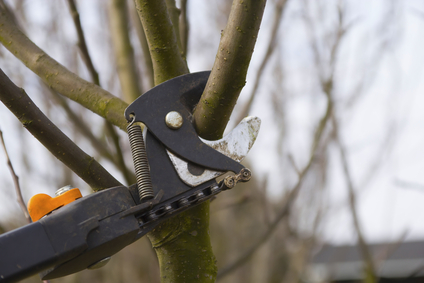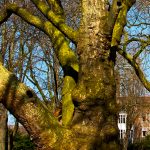Ask the Arborist: Facts About Trees
Whether you’re a seasoned gardener, a curious homeowner, or simply a nature enthusiast, there’s always something new to learn about trees. We’re going to dive into some intriguing information, practical tips, and expert insights for and about trees. From the remarkable abilities of bristlecone pines to the importance of proper tree care, we’ll touch on the astonishing and practical facts about trees.
The Astounding Abilities of Trees
Nature’s Air Purifiers
Trees play a vital role in maintaining the balance of our ecosystem. Did you know that a single mature tree produces enough oxygen to sustain two human beings for an entire year? Moreover, trees absorb carbon dioxide—a greenhouse gas responsible for climate change—helping to mitigate its effects on our planet.
The Timeless Giants: Bristlecone Pines
Among the longest-living organisms on Earth, bristlecone pines stand as ancient sentinels of time. These resilient trees, found in the high elevations of the American West, have survived for thousands of years, with some individuals exceeding 5,000 years in age.
Interestingly enough, trees are relative newcomers to this place called Earth. While the planet is believed to have been around 4.5 billion years, trees didn’t exist for the first 90 years of that run. But once they did arrive, and started producing oxygen, they heralded “evolution of life on Earth” more than 400 million years ago.
Tree Trivia: Fun Facts About Trees
- Trees can absorb harmful chemicals called phenolics, helping to improve water quality in our rivers and streams.
- Large oak trees can drop their lower branches during times of stress to conserve energy and resources.
- Some tree species are single-country endemics, meaning they are found exclusively in one particular country.
- Trees are the longest-living organisms on Earth, with some species, like bristlecone pines, surviving for thousands of years.
- Trees can communicate with each other through an underground network of fungi called mycorrhizae, sharing nutrients and information.
- The tallest tree in the world (at this time) is a coastal redwood named Hyperion, standing at a staggering height of around 360 feet (116 meters).
- Trees can absorb harmful chemicals called phenolics, helping to improve water quality in rivers and streams.
- The world’s largest living organism is a colony of quaking aspen trees in Utah known as “Pando,” covering over 106 acres.
- Trees release chemicals called phytoncides, which have been shown to reduce stress and boost immune function in humans.
- The wood of the holly tree is so dense and hard that it was historically used to make weapons and tools.
- Some trees, like the baobab tree, can store thousands of gallons of water in their trunks to survive droughts in arid regions.
How Can I Keep My Trees Healthy?
A healthy tree exhibits several key characteristics, including vibrant foliage, strong branches, and the absence of pests or diseases. Look for these signs to gauge the well-being of your trees and address any issues promptly:
- Vibrant Foliage: Look for leaves that are lush, green, and free from discoloration or spots. Healthy leaves indicate that the tree is photosynthesizing effectively.
- Strong Branch Structure: A healthy tree has well-spaced branches that form a balanced canopy. Avoid trees with dead or broken branches, as these can indicate underlying issues.
- Stable Trunk: The trunk should be straight and sturdy, without any signs of leaning, cracking, or peeling bark. A stable trunk supports the tree’s weight and provides structural integrity.
- Active Growth: Healthy trees exhibit new growth, such as buds, shoots, and expanding branches, especially during the growing season. This indicates that the tree is actively growing and developing.
- Resilient Bark: The bark should be intact and free from wounds or lesions. Healthy bark protects the tree from pests, diseases, and environmental stressors.
- Abundant Wildlife: Healthy trees attract a variety of wildlife, such as birds, insects, and squirrels, which rely on them for food, shelter, and nesting sites.
- Thriving Root System: Although not visible, a healthy root system is essential for anchoring the tree and absorbing water and nutrients from the soil. Look for signs of healthy soil, such as the presence of earthworms and other soil organisms.
- Seasonal Changes: Healthy trees undergo seasonal changes, such as leaf shedding in deciduous species or continuous growth in evergreen species, in response to environmental cues.
By observing these signs, you can assess the health and vitality of your trees and take appropriate measures to maintain their well-being.
 Why is Pruning so Important?
Why is Pruning so Important?
Pruning is essential for the health and well-being of trees for several reasons. Pruning removes dead, damaged, or diseased branches, allowing the tree to redirect energy towards new growth and development. By selectively removing branches, pruning helps shape the tree’s canopy and promote a strong, balanced structure. This reduces the risk of branch failure and improves overall stability.
Thinning out crowded branches through pruning increases air circulation within the canopy, reducing the risk of fungal diseases and promoting overall tree health. Proper pruning can stimulate flowering and fruit production in fruit-bearing trees, resulting in a more abundant harvest.
Dead or weak branches pose a safety hazard, especially during storms or high winds. Pruning removes these hazards, making the tree safer for people and property. Removing infected or infested branches through pruning helps contain the spread of pests and diseases, protecting the tree and nearby plants.
Pruning can improve the appearance of trees by removing unsightly branches, creating a more pleasing shape, and enhancing curb appeal. Overall, pruning plays a crucial role in maintaining the health, safety, and beauty of trees, making it an essential aspect of tree care and maintenance.
What are the Best Ways to Prune a Tree?
When pruning a tree, it’s important to follow these simple steps for the best results. Use sharp, clean pruning tools to make precise cuts without damaging the tree. Rough cuts could be damaging later in life. Look for dead, diseased, or crossing branches that may hinder the tree’s growth or pose a safety hazard.
Use pruning shears or a pruning saw to make clean cuts just outside the branch collar (the swollen area where the branch meets the trunk). Avoid removing more than 25% of the tree’s canopy in a single pruning session to prevent stress and promote healthy regrowth. Keep the tree’s natural shape in mind and prioritize branches that improve structure, airflow, and overall health.
By following these basic principles, you can effectively prune your tree to promote growth, health, and longevity. And don’t forget the No. 1 step when pruning trees: safety. If you’re cutting from the ground, make sure you are out of harm’s way and when you’re up in a tree, use fall protection or have someone hold the ladder. Or, better yet, remove yourself entirely from danger and hire professionals.
What Are Other Ways I Can Protect My Trees?
Best Practices for Tree Hydration
Proper watering is critical, especially during dry spells or drought conditions. Learn how to water trees effectively, considering factors such as soil type, tree species, and weather patterns. Apply water directly to the root zone, ensuring it penetrates deeply into the soil. Water slowly to allow the soil to absorb moisture without runoff or puddling.
Water young trees more frequently, especially during hot or dry periods, and mature trees less often but deeply. Watering in the early morning or late afternoon means less evaporation and more absorption. Apply a layer of mulch around the base of the tree to retain moisture and regulate soil temperature.
Soil Health: Enhancing Conditions for Tree Growth
Healthy soil is the foundation for thriving trees. Explore methods for improving soil conditions, such as mulching, composting, and soil testing, to provide optimal support for your trees’ root systems.
Combating Diseases and Pests
Identifying and addressing common tree ailments is essential for maintaining their health and vitality. Familiarize yourself with prevalent diseases and pests in your area and implement preventive measures accordingly.
Handling Leaning or Unstable Trees
A leaning or unstable tree poses a potential hazard to property and safety. Seek professional assistance to assess the situation and determine the appropriate course of action, which may include pruning, bracing, or removal.
Tree Risk Assessments and Inspections
Regular tree inspections by certified arborists are crucial for identifying potential hazards and ensuring the safety of your property. Schedule periodic assessments to detect issues early and implement appropriate interventions.
As we conclude our look at trees, we hope you’ve gained some insights into their remarkable qualities and the importance of tree care. Remember, trees are not just silent spectators of nature—they are living organisms with profound impacts on our environment and well-being.
By nurturing and protecting these green guardians, we can preserve their legacy for generations to come. Have even more questions about your trees? Reach out to Inexpensive Tree Care and let’s see how we can help your trees.




